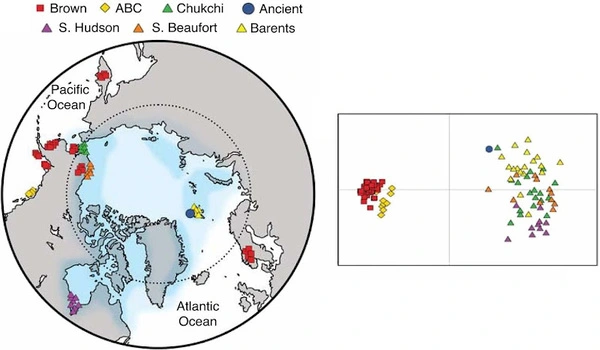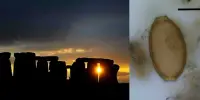The study of ancient brown bear genomes indeed sheds light on the evolutionary history and survival strategies of these majestic creatures during the Ice Age. By analyzing ancient DNA extracted from well-preserved remains such as bones, researchers can reconstruct the genetic makeup of ancient populations and track their demographic changes over time.
The brown bear is one of the largest extant terrestrial carnivores, with a wide distribution throughout the Northern Hemisphere. Unlike many other huge predators that were extinct at the end of the last Ice Age (cave bear, sabretoothed cats, cave hyena), the brown bear is one of the few that have survived to the present day. The subject has perplexed biologists for nearly a century: how did this happen?
Brown bears are ecologically adaptable and have a diverse diet. While they are carnivores, their diets can also be primarily plant-based, allowing them to adapt to environmental changes. During the previous Ice Age, brown bears’ ranges were reduced significantly, and they were wiped out in several regions. Brown bears used to occupy a much wider range including Ireland, Honshu, the largest island of Japan, and Quebec (Canada).
Our analyses showed that ancient brown bears represent genetic diversity absent in today’s populations. While brown bears survived global extinction, they suffered considerable losses of their historical range and genetic diversity.
Takahiro Segawa
Did the decline or disappearance of bear populations in certain areas happen because bears left those places for better ones that they still currently live, or did unique groups of bears with distinct genes inhabit those areas and go extinct, leading to a loss in the overall diversity of the species?
By studying the genomes of ancient brown bears dated to between 3,800 and 60,000 years old, including several individuals from outside their current range, researchers from the University of Copenhagen, Denmark and the University of Yamanashi, Japan sought to address this question by investigating the evolutionary relationships between brown bears across space and time.

Their study showed that brown bears did not simply move with the shifting environment, but populations went extinct. “Our analyses showed that ancient brown bears represent genetic diversity absent in today’s populations” says Takahiro Segawa, lead author of the study.
“While brown bears survived global extinction, they suffered considerable losses of their historical range and genetic diversity.” This new perspective highlights a crucial period in the brown bear’s history and that they also faced challenges during and after the last Ice Age.
“As we continue to grapple with the challenges of coexistence between humans and wildlife, insights from the distant past are invaluable in shaping a sustainable future,” says Michael Westbury, the study’s senior author.
“Although studying recent specimens can provide some insights, by including samples from the past and from areas a species no longer exists, we can better quantify how patterns of current diversity arose, and inform predictions about how they may respond to future environmental change.”
















